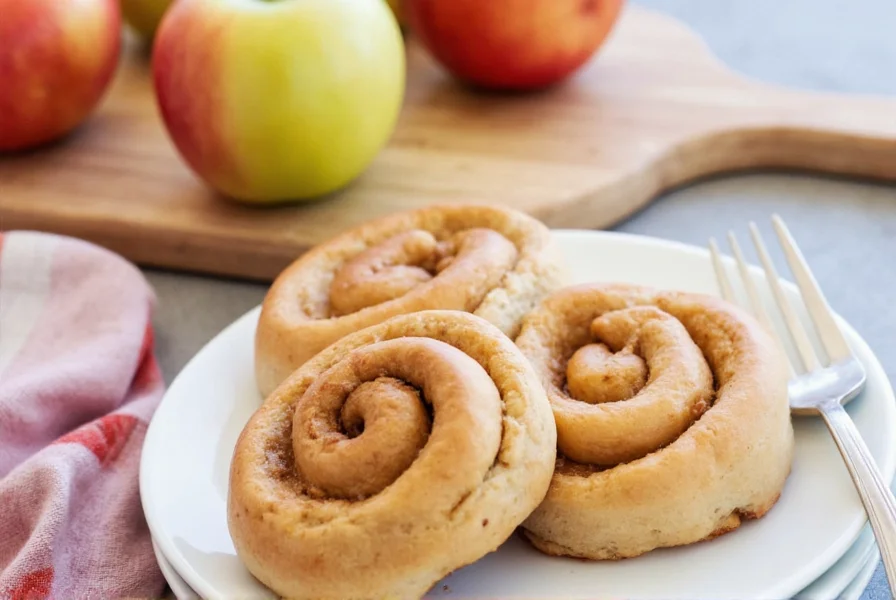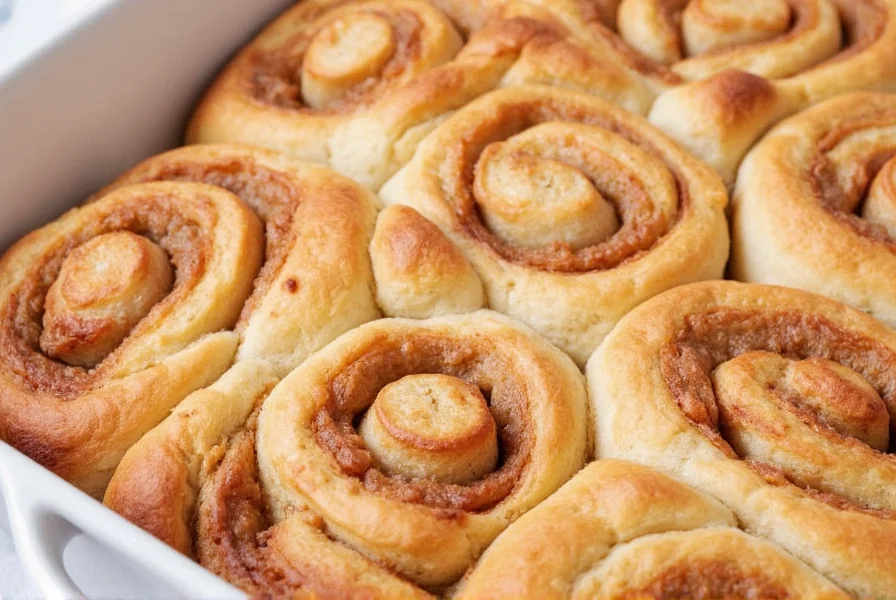There's something magical about the combination of flaky cinnamon rolls and fresh apples that makes this pairing a standout seasonal favorite. When crafted properly, apple cinnamon rolls deliver a perfect balance of sweet pastry, warm spices, and fruitiness that elevates the traditional recipe. This guide provides everything you need to create bakery-quality apple cinnamon rolls at home, whether you're an experienced baker or trying your first from-scratch pastry.
The Perfect Apple Selection for Cinnamon Rolls
Choosing the right apple variety is crucial for successful apple cinnamon rolls. While many types work, certain characteristics make some apples superior for baking:
| Apple Variety | Texture When Baked | Flavor Profile | Best For |
|---|---|---|---|
| Honeycrisp | Holds shape well | Sweet-tart balance | All-purpose baking |
| Granny Smith | Firm, maintains structure | Bright tartness | Contrasting flavor |
| Braeburn | Softens but doesn't disintegrate | Complex sweet-spicy | Deep flavor development |
| Fuji | Tender but holds form | Sweet with mild acidity | Sweeter finished product |
For optimal results in your homemade apple cinnamon rolls recipe, slice apples to 1/4-inch thickness and toss with a tablespoon of lemon juice to prevent browning before assembling. The natural pectin in apples helps create a delicious compote-like layer between the pastry layers as they bake.
Step-by-Step Apple Cinnamon Roll Preparation
Creating exceptional apple cinnamon rolls requires attention to both the pastry dough and apple preparation. Follow these professional techniques for best results:
- Dough preparation: Use lukewarm milk (105-110°F) to activate yeast properly without killing it. Allow dough to rise in a warm, draft-free environment until doubled (about 1-1.5 hours).
- Apple treatment: Sauté sliced apples in butter with 1 tablespoon brown sugar and 1/2 teaspoon cinnamon for 3-4 minutes until slightly softened but still holding shape. This step enhances flavor and removes excess moisture that could make rolls soggy.
- Roll assembly: Roll dough to a 16x12 inch rectangle. Spread evenly with softened butter, then layer with cinnamon-sugar mixture followed by the prepared apples. Roll tightly from the long side.
- Baking temperature: Bake at 350°F (not 375°F as many recipes suggest) to ensure even cooking without burning the exterior before the interior is done.

Common Mistakes to Avoid in Apple Cinnamon Roll Baking
Even experienced bakers encounter challenges with this recipe. Understanding these pitfalls will help you achieve perfect results every time:
- Using overly ripe apples: Overripe fruit breaks down completely during baking, creating a mushy texture rather than distinct apple layers in your cinnamon rolls with apples.
- Skipping the apple pre-cook: Raw apples release too much liquid during baking, resulting in soggy bottoms and uneven texture in your apple stuffed cinnamon rolls.
- Rolling too tightly: Excessive pressure squeezes out filling and creates dense rolls instead of the light, flaky layers characteristic of quality cinnamon roll preparation.
- Incorrect icing application: Adding glaze while rolls are too hot causes it to melt through the layers rather than creating that signature top coating on your fall baking recipe.
Storage and Serving Recommendations
Proper storage maintains the delicate balance between pastry crispness and apple freshness. For best results with your apple cinnamon rolls recipe:
- Store at room temperature for up to 24 hours in an airtight container with parchment between layers
- Refrigerate for 3-4 days; reheat individual rolls for 20-30 seconds in microwave before serving
- Freeze unbaked rolls for up to 3 months; thaw overnight in refrigerator before baking
- Pair with sharp cheddar cheese for a traditional New England combination that enhances both flavors

Why This Seasonal Combination Works So Well
The magic of cinnamon rolls and apples together lies in complementary flavor chemistry. Cinnamon contains cinnamaldehyde, which enhances our perception of sweetness without additional sugar. Apples provide natural pectin and malic acid that balance the richness of the pastry. When baked together, the Maillard reaction creates complex flavor compounds that neither ingredient produces alone.
Professional bakers often add a pinch of cardamom to their apple cinnamon roll baking tips repertoire, as its citrusy notes cut through the richness while complementing both main ingredients. For those exploring seasonal cinnamon roll variations, a tablespoon of Calvados (apple brandy) in the apple mixture adds sophisticated depth without overwhelming the other flavors.
Frequently Asked Questions
Can I use canned apple pie filling in cinnamon rolls?
While convenient, canned pie filling contains thickeners and excess sugar that can make cinnamon rolls overly sweet and soggy. Fresh apples treated with a small amount of cornstarch (1 teaspoon per 2 apples) provide better texture and more natural flavor in homemade apple cinnamon rolls.
How do I prevent apples from sinking to the bottom of cinnamon rolls?
Sautéing apples briefly before assembly removes excess moisture that causes sinking. Additionally, layering apples over the cinnamon-sugar mixture rather than directly on the dough creates a barrier that helps maintain their position during the rolling process for perfect apple stuffed cinnamon rolls.
What's the best way to reheat apple cinnamon rolls?
For optimal texture, reheat individual rolls at 300°F for 8-10 minutes rather than using a microwave. This gentle warming restores the flakiness of the pastry while maintaining the apple's tender texture in your fall baking recipe.
Can I make apple cinnamon rolls ahead of time?
Yes, prepare rolls through the rolling stage, then cover and refrigerate overnight. In the morning, let them come to room temperature (about 1 hour) before baking. This method actually improves flavor development in your seasonal cinnamon roll variations while saving morning preparation time.











 浙公网安备
33010002000092号
浙公网安备
33010002000092号 浙B2-20120091-4
浙B2-20120091-4